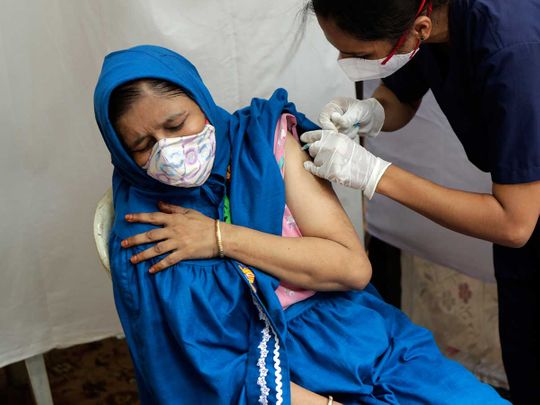
With India reporting around 62,000 new infections over the past 24 hours on Friday and deaths at a two-month low of 1,587, the recent move by cities such as Mumbai and New Delhi to ease their stringent lockdowns seems justified. But emerging out of a pandemic surge that killed tens of thousands in the past couple of months and devastated the healthcare infrastructure, India cannot afford to be complacent about the possibility of a third wave crippling the country once again.
From Delhi and Mumbai to Bengaluru and Hyderabad, the media is busy beaming images of crowds jostling in busy market places and malls, traffic filling the streets and leisure and entertainment venues reopening to a full house. In this race to resume business activities, neither the state administrators nor the federal government should forget the heartbreaking visuals seen at the height of the second wave just about a month back — where people desperately ran around trying to source oxygen cylinders that would save their loved ones, hospitals ran out of beds and oxygen and crematoriums saw queues that lasted for days.
It was a wave that overwhelmed the entire country, and the lessons learnt from that experience need to be put into action now.
Even with the lower caseload of infections, India, along with Brazil, is one of the countries reporting the highest seven-day daily average of deaths. For instance Maharashtra, with 9,830 new infections overnight, accounts for about a fifth of India’s total of 29.76 million infections, and its death toll alone stands at more than 116,000.
The need of the hour is therefore to have a clear pandemic management plan should a next wave strike the country — and build redundant capacity across the healthcare system. All hospitals and healthcare professionals should be aligned with the goals of preventing or delaying the next wave as much as possible, and protocols should be clearly established for emergencies. Government authorities should also utilise this time in training medical students and allied health professionals to step up for Covid duty should the medical infrastructure get similarly overwhelmed like the last time around.
Similarly, states and the central government must also ensure that while economies reopen and commercial activities resume, there is no let-up in enforcing Covid-appropriate behaviour such as wearing masks and maintaining social distancing.
And the national vaccination drive needs to run on a much higher gear urgently — India has managed to inoculate only around 5 per cent of all 950 million eligible adults so far.
With these collective efforts, India can certainly be better prepared to face the next surge in Covid-19 cases — if it ever comes.







